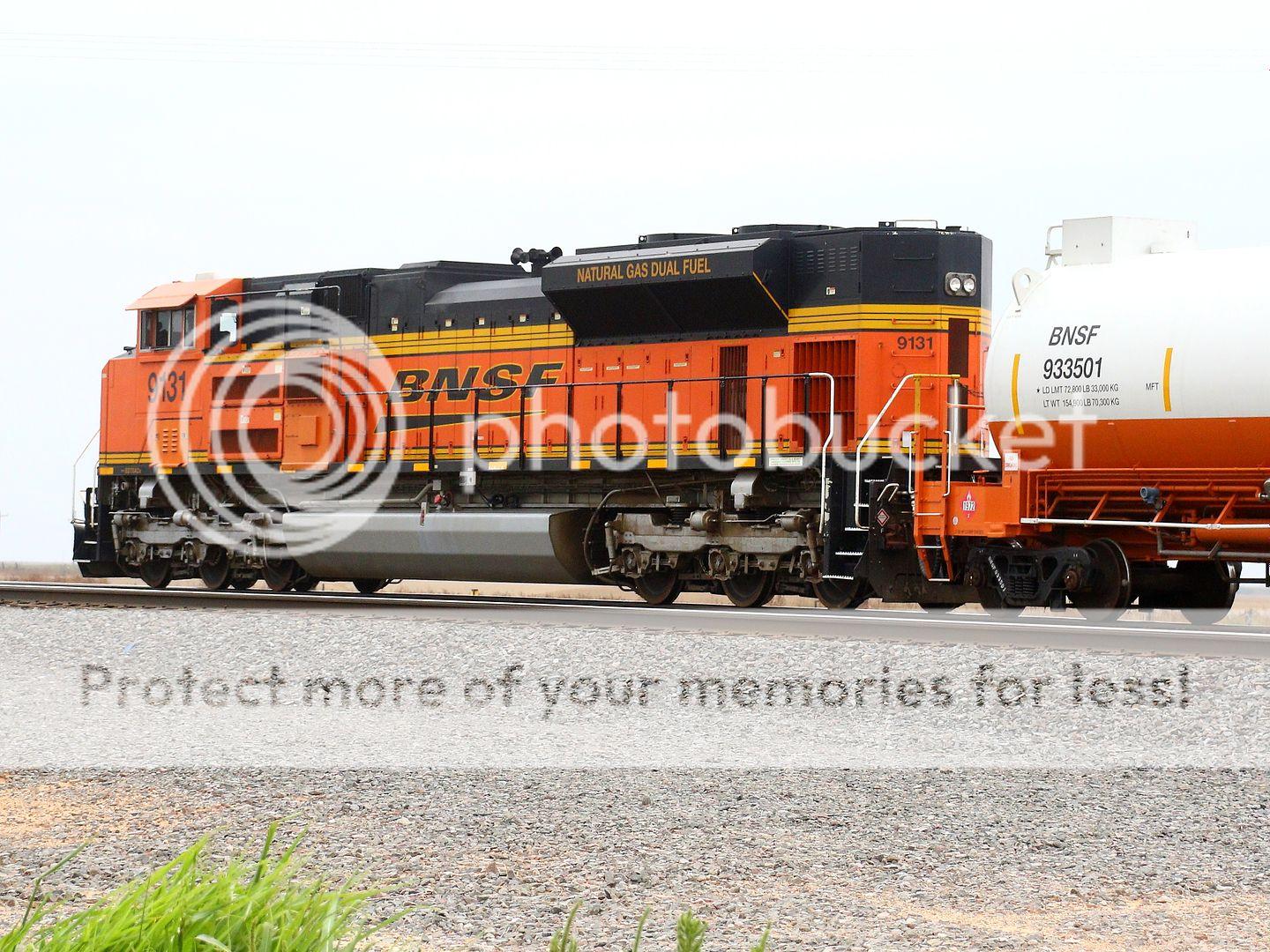The concept of using LNG to fuel locomotives isn't new. BNSF Railway Co. predecessor Burlington Northern Railroad operated some natural gas-powered locomotives in the 1980s and 1990s; BNSF tested LNG-fueled switchers in Los Angeles several years ago; and Union Pacific Railroad pursued a $15 million research program on dual-fuel locomotives in the 1990s that involved LNG.
A conversion has become attractive again because there's a greater supply of natural gas in the United States and Canada due to explosive production at a growing number of shales and basins, and the price spread between diesel and natural gas continues to favor gas.
GE Transportation will apply its "NextFuel" conversions of Evolution 3000 series locomotives for upcoming trials with the BNSF and CSX railroads. The low-pressure system allows the engines to run on 100% diesel in case there is a problem with liquefied natural gas availability or with onboard fuel delivery.
The low-pressure approach will result in less diesel displacement perhaps 15% less than might be possible with a high pressure injection system, says a railroad industry source. He likens that relatively modest penalty to "an insurance premium."
"Natural gas-fueled locomotives can travel longer distances without refueling stops, as well as provide environmental and economic benefits," states a GE-CSX release. "Adoption of natural gas-fueled locomotives will make freight rail an even more attractive transportation solution and furthers the industry's ability to absorb traffic from the nation's highways in an environmentally efficient way."
"LNG technology has the potential to offer one of the most significant developments in railroading since the transition from steam to diesel in the 1950s," CSX executive VP and COO Oscar Munoz says in the joint announcement. "That change took many years to complete and began with a lot of unknowns, and this one is no different.
From 2013
US-based rail operator BNSF Railway will start testing liquefied natural gas (LNG) as an alternative fuel in its freight locomotives later in 2013.
BNSF Railway has been working with locomotive manufacturers GE Transportation and EMD, a unit of Caterpillar, to develop the LNG engine technology that will be used in the pilot project.
The use of LNG as transportation fuel is being explored as a means of reducing greenhouse gas emissions and particulates when compared to diesel.
BNSF chairman and CEO Matthew Rose said that the use of LNG as an alternative fuel is a potential transformational change for the company.
"While there are daunting technical and regulatory challenges still to be faced, this pilot project is an important first step that will allow BNSF to evaluate the technical and economic viability of the use of liquefied natural gas in through-freight service, potentially reducing fuel costs and greenhouse gas emissions, thereby providing environmental and energy security benefits to our nation," Rose said.
"BNSF Railway has been working with locomotive manufacturers GE Transportation and EMD, a unit of Caterpillar, to develop the LNG engine technology that will be used in the pilot project."
The pilot will see BNSF test six modified locomotives, three each from Caterpillar and GE.
BNSF said if the pilot project is successful, it would offer huge saving in terms of fuel as its locomotives consume around 4.9 billion litres of diesel per year.
BNSF's predecessor Burlington Northern used LNG as a fuel for locomotives on a small stretch of contained track in the 1980s and 1990s.
"The changed market for natural gas in the United States is a critical part of our decision to explore it as a locomotive fuel and in this pilot we will test natural gas engine technology in railroad service," Rose said.
"We will be working with the equipment manufacturers, the various regulatory agencies and government officials to address the necessary actions to accomplish this."
BNSF plans to make a decision in 2014 on whether it will start to switch its fleet of over 6,900 locomotives to LNG.
In January 2013, the company unveiled plans to invest $4.1bn on capital expenditures (CAPEX) in 2013, an increase of $450m (11%) compared to the 2012 capital spending budget of $3.6bn.


